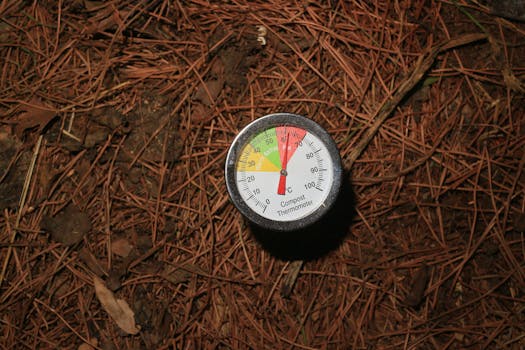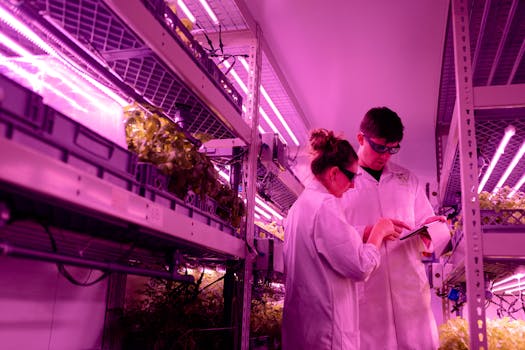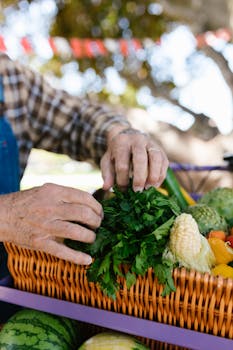Anúncios
Creating effective agriculture materials involves understanding the needs of farmers, the environment, and the crops themselves. High-quality resources can significantly enhance agricultural productivity. Proper planning ensures that these materials address the unique challenges faced in agriculture.
As agriculture evolves, the demand for informative and effective farming materials increases. Farmers rely on various support systems, including training manuals, brochures, and digital content. Developing these items requires a combination of research, creativity, and practical knowledge.
Whether you are aiming to educate, promote sustainable practices, or introduce innovative solutions, following structured steps can streamline the development process. This article outlines essential strategies for creating impactful agriculture materials.
Understanding Your Audience
The first step in creating agriculture materials is understanding your target audience. Different farming communities have unique needs and challenges. Knowing these differences helps in tailoring your messages effectively.
Engage with local farmers and agricultural experts to gather insights. Conduct surveys or focus groups to better understand their requirements. Gathering feedback will ensure your materials address their concerns directly.
Anúncios
Consider the varying educational backgrounds of your audience. Some farmers may be well-versed in modern techniques, while others may need fundamental knowledge. Therefore, a nuanced approach is vital for effective communication.
Use demographic information to guide your content. Age, location, and farming practices can influence how your audience receives information. Tailoring your materials to fit these demographics enhances their usefulness.
Always keep in mind that your audience may have different learning styles. Incorporating visual aids and diverse formats can help ensure your materials resonate widely. Doing so fosters greater understanding and adoption of the information provided.
Anúncios
Research and Content Development
Thorough research is fundamental in developing effective agriculture materials. Gather data on current farming practices, trends, and advances in technology. This information lays the groundwork for accurate and relevant content.
Utilize academic journals, government publications, and agricultural databases to inform your writing. Reliable data bolsters your credibility and helps farmers make informed decisions based on your materials.
Identify key topics that matter to your audience. Focus on actionable insights that can improve productivity, sustainability, or efficiency. Presenting practical information encourages readers to engage with your content.
Craft clear and concise content that is easy to read. Avoid jargon unless you explain it beforehand. This clarity ensures that your audience comprehends the material without feeling overwhelmed.
Incorporate visuals like charts, graphs, and images throughout your content. Visual aids not only break up text but also enhance understanding. Well-placed visuals can make complex information easily digestible.
Design and Layout Considerations
When creating agriculture materials, an effective design enhances readability. Use clean layouts that highlight key information. Good design guides the reader’s eye and keeps them engaged.
Choose a color scheme that resonates with farming themes, utilizing earthy tones or greens. This color palette creates a harmonious feel that reflects the agricultural environment. A consistent theme supports brand recognition.
Font choice is crucial for accessibility. Select fonts that are easy to read in both print and digital formats. Ensure text size is appropriate, particularly for printed materials.
Incorporate ample white space to avoid clutter. This spacing gives readers a visual break and allows crucial points to stand out. Cluttered pages can confuse or overwhelm your audience.
Test your design across various platforms. Ensure that your materials look good in print, on websites, and mobile devices. This adaptability increases accessibility for your audience wherever they may be.
Utilizing Technology and Digital Tools
In today’s digital age, technology plays a key role in creating agriculture materials. Utilize software for graphic design, writing, and data visualization. These tools can greatly enhance the quality of your output.
Online platforms like Canva and Adobe Illustrator offer user-friendly interfaces for design. They enable quick creation of professional-grade materials without extensive graphic design skills.
Digital content allows for easy updates and distribution. Consider creating online resources, including videos and interactive content. This format appeals to the tech-savvy farmers who rely on digital information.
Employ social media channels to promote your materials. Sharing snippets or engaging visuals can draw attention to your content. This outreach builds your audience and increases the impact of your materials.
Incorporating feedback mechanisms into your digital content can also be beneficial. Allow users to comment or ask questions, increasing interaction. This engagement can refine future materials based on audience needs.
Distribution Strategies
Getting your agriculture materials into the hands of farmers requires effective distribution strategies. Understand where your audience frequents—whether at local markets, agricultural expos, or online platforms.
Partnering with local agricultural organizations can facilitate wider distribution. These partnerships may provide access to newspapers, community bulletins, and newsletters where your materials can be featured.
Consider publishing in various formats. Printed brochures, digital PDFs, and online articles can cater to different preferences. A diverse distribution strategy ensures you reach a broader audience.
Leverage social media marketing. Share your materials in farming groups or forums, increasing visibility. Paid advertising can also effectively reach specific demographics tailored to your content.
Host workshops or demonstrations that utilize your materials. This hands-on approach not only engages farmers but also reinforces the value of your content in real-world applications. Interaction encourages retention and application of your material.
Monitoring and Feedback
After distributing your agriculture materials, monitoring their effectiveness is crucial. Gathering feedback helps identify which aspects resonate well with your audience and which need adjustment.
Utilize methods like surveys, interviews, and analytics to assess impact. Find out what information was most beneficial and what was overlooked. This data can inform future iterations of your materials.
Encourage farmers to share their experiences with the materials. Create a platform for testimonials and case studies. This social proof can enhance the credibility of your future publications.
Regularly update your materials based on feedback and new research. Keeping content current ensures that farmers receive the most relevant information. This ongoing improvement builds trust and reliability.
Establish long-term relationships with your audience. By responding to their needs through continuous improvement, your materials will remain valuable resources. This commitment demonstrates care and dedication to the farming community.
Conclusion
Creating effective agriculture materials is a multi-faceted process that requires careful planning, research, and execution. By understanding your audience and leveraging technology, you can develop high-quality resources.
Prioritize clear communication, engaging design, and effective distribution to maximize the impact of your materials. Continuous monitoring and feedback loops ensure ongoing relevance in a rapidly changing agricultural landscape.
By committing to these practices, you contribute significantly to the farming community’s knowledge base. Ultimately, well-crafted agriculture materials empower farmers to improve their operations and sustainability.



